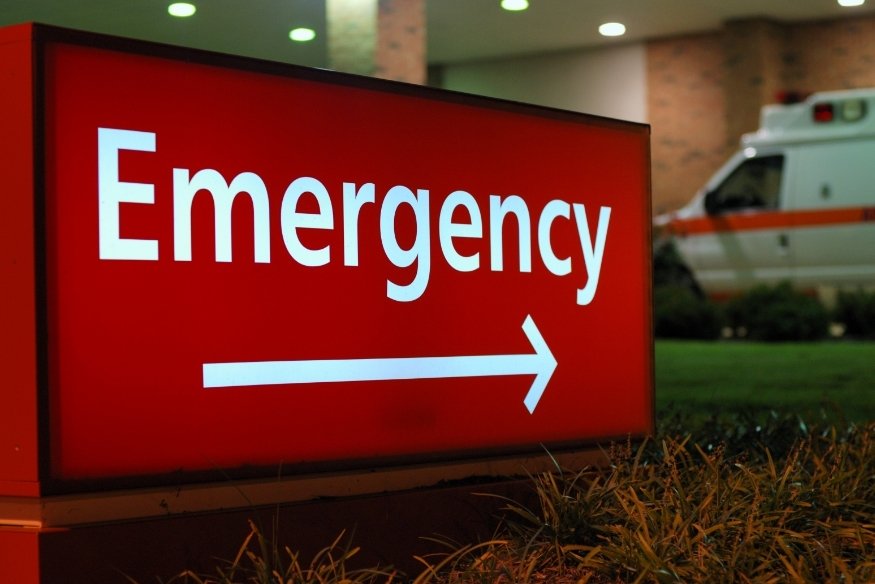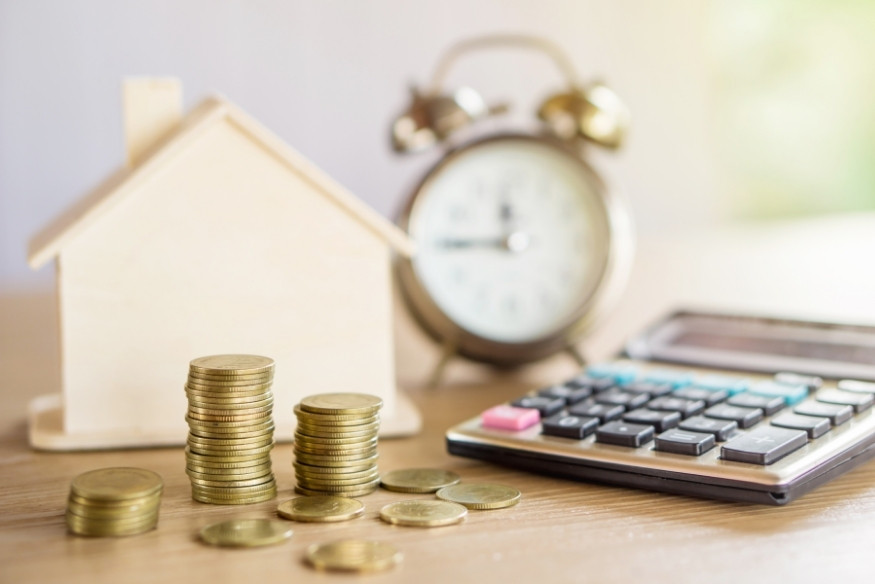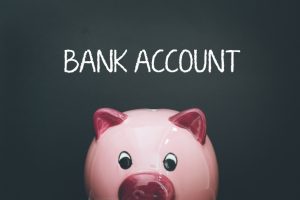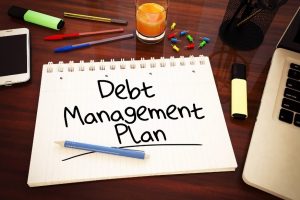Life is full of surprises — from sudden car repairs to unexpected medical expenses. Having a financial safety net can make these challenges easier to manage. That’s where an emergency savings plan comes in: a dedicated fund set aside for unforeseen costs and true emergencies.
Building an emergency fund is one of the smartest ways to protect your finances. It provides peace of mind, helps you avoid debt, and gives you the confidence to handle life’s unpredictable moments.
In this article, you’ll learn how to create an emergency fund that fits your lifestyle, no matter where you live — with practical tips to help you save, stay on track, and prepare for the unexpected.
Key Takeaways
- Understand why an emergency savings plan is essential for financial stability.
- Learn how to calculate the ideal amount to set aside based on your lifestyle.
- Discover effective strategies for building your emergency fund steadily.
- Keep your emergency fund separate and accessible for real emergencies only.
- Explore long-term tips for maintaining and growing your emergency savings over time.
Why You Need an Emergency Fund Today

In today’s unpredictable world, having an emergency fund is more important than ever. Unexpected expenses — like sudden car repairs, medical costs, or urgent home maintenance — can happen at any time. Setting aside money in advance can make a significant difference when these situations arise.
What Constitutes a Financial Emergency
A financial emergency is any unexpected cost that requires immediate action. Common examples include:
- Medical expenses
- Vehicle repairs
- Essential home maintenance
- Temporary loss of income
These situations can quickly turn into a financial burden if you’re not prepared.
The Cost of Being Unprepared
Without a financial cushion, even small surprises can have long-term consequences. If you’re forced to borrow money, you may face:
- High-interest debt
- Damaged credit scores
- Increased financial stress
A well-funded emergency savings plan helps you avoid these setbacks and supports a more stable financial future.
Setting Your Emergency Fund Target
Establishing the right target for your emergency fund is one of the most critical steps in building lasting financial stability. Your savings goal should reflect your real-life needs, not just a general rule — and that means considering your monthly expenses, lifestyle, and level of risk tolerance.
Why the Target Matters
An emergency fund isn’t just a number — it’s a financial safety buffer that protects you when life takes an unexpected turn. Setting the wrong target can leave you either underprepared for a true emergency or discouraged by an unrealistic goal.
A well-chosen target allows you to:
Respond confidently to crises without relying on credit.
Maintain your standard of living during job loss or illness.
Avoid dipping into long-term savings or retirement funds.
The 3–6 Month Expense Rule (and When to Go Beyond It)
The 3–6 month rule is a widely recommended guideline: save enough to cover three to six months of essential living expenses. This range gives most people enough time to recover from events like:
Sudden unemployment
Major health issues
Temporary loss of income (e.g., for freelancers or seasonal workers)
Family emergencies or relocation needs
But this isn’t one-size-fits-all. Some individuals may need more than six months of coverage, especially if:
Your job is in an unstable industry
You’re self-employed or freelance
You’re the sole income provider in your household
You live in a country with limited social safety nets or long job search timelines
In these cases, saving for 9 to 12 months of expenses may provide a better level of protection and peace of mind.
Calculating Your Monthly Essentials
To set an accurate target, you must first know what you spend to live each month. This means calculating only your essential expenses — the ones you absolutely must cover, regardless of your income status:
Housing: rent or mortgage payments
Utilities: electricity, heating, water, internet
Food: groceries and basic household supplies
Transportation: fuel, public transport, insurance
Health insurance and medical costs
Debt repayments: credit cards, loans, student debt
Childcare or education (if applicable)
Tip: Use your bank statements or a budgeting app to track expenses over the last 2–3 months and calculate an average.
Avoid including discretionary expenses, like dining out, entertainment, or travel — these aren’t part of your emergency survival budget.
Adjusting for Your Life Stage and Personal Risks
Your target should evolve as your life changes. Ask yourself:
Are you single or supporting a family?
Do you own a home or rent?
Is your income fixed or variable?
Do you have access to state unemployment benefits or social support?
For example:
A young professional living alone with a stable job may be fine with 3 months of savings.
A freelancer with two children and no fixed income may benefit from saving 9–12 months’ worth.
Set Milestones — Don’t Let the Full Target Overwhelm You
Trying to save €10,000 right away might feel impossible. Instead, break it down into smaller, achievable goals:
Step 1: Save €500 to cover minor emergencies.
Step 2: Build toward 1 month of expenses.
Step 3: Gradually reach the 3–6 month target.
Each small win builds confidence and momentum.
Assessing Your Current Financial Situation

Before you can start building a strong emergency fund, you need to understand where you stand financially. Your current situation — including your income, expenses, and savings habits — forms the foundation for your entire savings strategy.
A clear picture of your finances will help you identify realistic goals, create a sustainable savings plan, and improve your overall financial resilience.
Evaluating Your Income and Expenses
To manage your money effectively, you must understand your cash flow — the movement of money in and out of your household.
Start by tracking every expense and source of income for one full month:
Use a budgeting app, spending tracker, or a simple spreadsheet.
Record all forms of income: salary, freelance work, benefits, etc.
List all expenditures: from rent and bills to streaming subscriptions and snacks.
Once tracked, categorize your spending into:
Essential expenses: rent/mortgage, groceries, utilities, insurance, transport.
Non-essential expenses: dining out, entertainment, shopping, subscriptions.
Tip: Color-coding or using pie charts in budgeting tools can help visualize where most of your money goes — and where you can start cutting.
Identifying Potential Savings Opportunities
After understanding your spending, it’s time to spot opportunities to save. Even small changes in your routine can make a big difference over time.
Cut non-essentials: Limit restaurant meals, cancel unused subscriptions, and reduce impulse purchases.
Optimize essentials: Compare utility providers, look for grocery discounts, or switch to lower-cost phone/data plans.
Adjust habits: Plan meals ahead, buy in bulk, and take advantage of loyalty programs or digital coupons.
Every bit you save can be redirected to your emergency fund.
| Expense Category | Monthly Expense | Potential Savings |
|---|---|---|
| Groceries | $500 | $100 |
| Dining Out | $200 | $150 |
| Entertainment | $300 | $200 |
Example: Just by making a few small changes, you could free up €400–€500 per month to build your emergency fund faster — without sacrificing your essentials.
Creating a Dedicated Emergency Fund Account
Having a separate account just for your emergency fund is one of the smartest ways to protect your savings. It acts as a financial safety net, giving you peace of mind and helping you avoid the temptation to spend money meant for emergencies.
Keeping this fund separate from your everyday spending account makes it easier to stay disciplined. It ensures that the money is available only when truly needed, not for day-to-day expenses or impulsive purchases.
Why You Should Use a Separate Account
Avoids accidental spending: You’re less likely to dip into your emergency savings if they’re not mixed with your checking account.
Helps track progress: A separate balance allows you to see how close you are to your savings goal.
Supports budgeting: With clear boundaries, it’s easier to manage your finances and stay on track with your other goals.
Tip: Choose an account that’s easily accessible in a real emergency — but not so easy that you’ll be tempted to use it for non-essentials.
Choosing the Right Type of Savings Account
Across many countries, banks and financial institutions offer several types of savings accounts suitable for an emergency fund. When choosing one, consider these factors:
- Accessibility
- Interest rate
- Account fees
- Transfer options and mobile access
Here are common account types and how they serve different needs:
High-Yield Savings Accounts:
Offer above-average interest rates, helping your emergency fund grow passively over time. Ideal for long-term stability.Instant Access or Flexible Savings Accounts:
Allow immediate withdrawals without penalties. Great for ensuring your emergency fund is always available when needed.Fixed-Term Deposits (Time Deposits):
May offer higher interest, but funds are locked in for a set period. Not recommended for emergency funds unless a portion is kept liquid elsewhere.
What to Look for When Comparing Accounts
Instead of focusing on any one country’s banks, look at universal features that matter most:
| Feature | Why It Matters |
|---|---|
| Interest Rate | Helps your fund grow passively — the higher, the better |
| Fees | Look for accounts with no monthly maintenance fees |
| Accessibility | Ensure easy transfers through online/mobile banking |
| Withdrawal Terms | Avoid penalties or delays when accessing your money |
Example: If your emergency arises on a weekend, you’ll want an account with 24/7 online access — not one that requires branch visits.
Extra Tip: Link It to Your Main Account for Automation
If your bank allows it, link your emergency fund account to your primary checking account. This makes it easy to:
Set up automatic transfers
Quickly move funds in case of emergency
Monitor your savings progress without switching platforms
By selecting the right type of account and keeping your emergency fund separate, you strengthen your financial discipline and make sure that your safety net is always ready when you need it most.
Step-by-Step Plan to Build Your Emergency Fund

Creating an emergency fund doesn’t have to be complicated. With a clear and consistent strategy, you can begin building your financial safety net today. The key is to make saving a habit—something automatic and sustainable over time.
Starting with a Small, Achievable Goal
Begin with a modest, realistic target—such as saving €500 or covering one month’s worth of essential expenses. Starting small helps you gain momentum and confidence. A specific, achievable goal makes it easier to stay motivated, track your progress, and build the discipline needed to save consistently. As you reach your first milestone, you’ll feel more encouraged to aim higher and grow your emergency fund further.
Setting Up Automatic Transfers
One of the most effective ways to save consistently is to automate the process. Set up automatic transfers from your checking account to your dedicated emergency fund. Most banks and financial apps allow you to schedule recurring transfers, which means the money is saved without requiring any extra effort on your part. Automating your savings minimizes the temptation to spend and turns saving into a regular, effortless routine.
Determining Your Optimal Saving Schedule
To make your savings strategy even more effective, align your automatic transfers with your income schedule. If you’re paid monthly, set a monthly transfer date. If you receive your income weekly or bi-weekly, schedule transfers accordingly. Saving immediately after getting paid ensures that a portion of your income is set aside before other expenses take priority, making it easier to stay consistent and disciplined.
By following these practical steps—starting small, automating transfers, and choosing the right saving schedule—you’ll gradually build a strong, reliable emergency fund. Over time, this financial cushion can provide peace of mind and protect you from unexpected costs or disruptions in income, helping you stay financially stable no matter what life throws your way.
Finding Extra Money for Your Emergency Fund
Securing extra funds to grow your emergency fund is entirely achievable by combining two powerful strategies: cutting unnecessary expenses and finding new income opportunities. This dual approach not only strengthens your financial cushion but also promotes better overall money management.
Reducing Monthly Expenses
One of the most effective ways to free up money for your emergency fund is to reevaluate your monthly expenses. Start by reviewing all your subscription services—such as streaming platforms, fitness memberships, or premium apps. Cancel or downgrade any that you don’t use frequently or can live without.
You can also reduce utility bills by adopting energy-saving habits at home. Use LED light bulbs, unplug devices when not in use, and be mindful of heating and cooling usage. When it comes to grocery shopping, planning meals in advance and buying in bulk can significantly lower your food expenses.
Additionally, consider negotiating your insurance premiums—whether for health, car, or home coverage. Comparing offers from different providers and switching to a more cost-effective option can result in substantial monthly savings that can be redirected straight into your emergency fund.
Increasing Your Income Sources
Boosting your income is another powerful way to accelerate the growth of your emergency fund. Look for freelance gigs or part-time jobs that match your skills and availability. Many people are finding success offering services online, such as tutoring, writing, graphic design, or consulting.
Selling unused items—like electronics, furniture, or clothes—can also generate quick cash. These side income efforts, even if small at first, can contribute meaningfully to your financial safety net.
Investing in your professional development is a smart long-term strategy. Enrolling in courses or obtaining certifications can lead to better job opportunities or promotions, ultimately increasing your earning potential and your ability to save more for your emergency fund.
Allocating Windfalls and Tax Refunds
Unexpected money—such as tax refunds, bonuses, or gifts—offers an excellent opportunity to boost your emergency fund without disrupting your regular budget. Make it a habit to allocate a significant portion, if not all, of these windfalls directly to your savings.
This simple yet powerful habit can dramatically improve your financial resilience. By growing your emergency fund through one-time gains, you’ll build peace of mind knowing you’re prepared to handle life’s financial surprises without stress or debt.
Tracking Your Emergency Fund Progress

Monitoring the progress of your emergency fund can be incredibly motivating. Not only does it help you stay committed to your financial goals, but it also gives you a clear sense of accomplishment as your savings grow. Tracking allows you to make adjustments when needed and ensures that your savings strategy remains effective and aligned with your changing needs.
Utilizing Budgeting Apps and Tools
Today’s digital tools make it easier than ever to keep a close eye on your emergency fund. Budgeting apps and mobile platforms offer real-time insights into your financial habits, helping you stay on track regardless of your country or banking provider.
Here are some popular budgeting apps widely accessible across multiple countries:
| App/Tool | Key Features | Availability |
|---|---|---|
| Mint | Expense tracking, budgeting goals, alerts | iOS, Android |
| YNAB (You Need A Budget) | Goal tracking, real-time syncing, education-focused | iOS, Android |
| PocketGuard | Automatic expense categorization, spending limits | iOS, Android |
| Goodbudget | Envelope-style budgeting, cross-device syncing | iOS, Android |
| Wally | Multi-currency support, visual spending insights | iOS, Android |
These tools allow you to categorize spending, set saving targets, and monitor your emergency fund’s growth over time. Many also provide alerts, tips, and even educational resources to help improve your financial literacy and discipline.
Celebrating Milestone Achievements
Recognizing and celebrating your financial milestones is just as important as setting goals. Each time you reach a savings target—whether it’s your first €500 or enough to cover three months of expenses—take a moment to appreciate your progress.
Celebrating can be simple and budget-friendly. Treat yourself to a favorite meal, enjoy a small outing, or share your achievement with someone who supports your goals. These moments of recognition help reinforce your commitment and make the saving journey more enjoyable.
By tracking your progress and celebrating key milestones, you stay engaged, motivated, and focused on building a resilient emergency fund that supports your long-term financial well-being.
Overcoming Common Emergency Fund Challenges
Building a strong and reliable emergency fund requires discipline, consistency, and a proactive mindset. Along the way, it’s normal to encounter obstacles—but the key is not letting them derail your progress. By recognizing common challenges and learning how to navigate them, you can stay on course and continue moving toward your financial goals.
Dealing with Saving Setbacks
Setbacks are a natural part of any savings journey. Whether it’s an unexpected expense or a drop in income, these moments can slow your progress—but they don’t have to stop you entirely. The first step in overcoming a setback is identifying the cause and adjusting your strategy accordingly.
Here are some ways to recover from a saving disruption:
Review your budget to identify non-essential expenses that can be reduced or eliminated.
Automate your savings to ensure consistency, even if it’s a smaller amount.
Look for additional income opportunities such as freelance work or selling unused items.
The goal is to adapt without giving up. Even small contributions help your emergency fund grow over time, and consistency is more important than perfection.
Resisting the Temptation to Use Your Fund Prematurely
One of the biggest challenges in maintaining an emergency fund is resisting the urge to dip into it for non-emergencies. It can be tempting to use the funds for travel, shopping, or even regular bills—but doing so can leave you unprepared when a real emergency arises.
To safeguard your fund:
Keep it in a separate savings account, ideally one that isn’t linked to your everyday spending.
Consider using an account with limited withdrawal options, so you have to pause and reflect before accessing the money.
Label the account clearly, reinforcing its purpose as an emergency-only reserve.
Creating a barrier—whether psychological or logistical—can help you protect the integrity of your emergency fund.
Balancing Emergency Savings with Other Financial Goals
Your emergency fund is just one piece of a larger financial picture. It’s important to balance saving for emergencies with other goals, such as buying a home, investing, or funding education. The challenge lies in allocating your income wisely without neglecting one area over another.
Here’s how to maintain that balance:
Prioritize your financial goals based on urgency and impact. An emergency fund usually comes first, but not at the expense of essential long-term planning.
Divide your income into specific savings categories or “buckets,” assigning each goal a percentage.
Regularly review and adjust your financial plan as your income, expenses, and priorities evolve.
By taking a holistic view of your finances and maintaining flexibility, you can make steady progress on all fronts without compromising your financial safety net.
When and How to Use Your Emergency Fund

Having an emergency fund is a crucial step toward financial stability—but knowing when and how to use it is equally important. This reserve is specifically meant to protect you from the impact of unexpected financial shocks, helping you avoid debt or panic when life throws you a curveball.
Identifying True Financial Emergencies
A true financial emergency is an urgent, unexpected expense that cannot be handled through your regular monthly budget. These situations require immediate attention and often involve your health, safety, or income. Common examples include:
Medical emergencies or unplanned healthcare expenses
Major car repairs necessary to commute to work or school
Unexpected home repairs, such as fixing a broken boiler or roof leak
Loss of income, whether from a job layoff or medical leave
It’s essential to distinguish these from non-emergencies. A spontaneous vacation, new electronics, or dining out—even if emotionally tempting—should not be funded through your emergency savings.
A good rule of thumb is: if the expense is unexpected, urgent, and necessary, then it likely qualifies. If it’s optional or can be planned for in advance, it should be covered by a different part of your budget.
Using Your Emergency Fund Responsibly
Once you determine that an expense is a genuine emergency, access your emergency fund calmly and strategically. Use only what is necessary to resolve the situation, and document the reason for the withdrawal. This helps you stay accountable and better plan for replenishment.
Avoid draining your entire emergency fund unless absolutely necessary. If possible, combine it with partial support from insurance or other sources to stretch its effectiveness.
Replenishing Your Fund After Use
Using your emergency fund is not the end—it’s a signal to begin rebuilding it. Replenishing your emergency fund as soon as possible ensures you’re protected the next time life surprises you. Here are practical ways to start:
Cut non-essential expenses temporarily and redirect that money to your savings.
Find ways to increase your income, such as freelancing, a side job, or selling items you no longer use.
Set up automatic transfers to steadily refill your emergency fund over time.
Staying disciplined in rebuilding your fund keeps you financially resilient. It gives you peace of mind knowing that you’re prepared for the next unexpected event without sacrificing your long-term financial goals.
For a deeper understanding of how emergency funds work and what qualifies as a true emergency, you can visit Investopedia’s guide on emergency funds.
Conclusion: Securing Your Financial Future
Building an emergency fund is one of the most essential steps you can take toward lasting financial security. It serves as a protective barrier between you and debt, ensuring you have the means to cover unexpected expenses without disrupting your long-term goals or lifestyle.
Throughout this guide, we’ve explored why an emergency fund matters, how to start one, and practical strategies to grow and maintain it. From evaluating your financial situation to tracking progress and overcoming setbacks, each step contributes to building a fund that truly protects your future.
Now is the perfect time to take action. Set a clear savings goal, open a dedicated account for your emergency fund, and schedule regular transfers—no matter how small to start. With consistency and commitment, your emergency fund will grow, giving you greater confidence and peace of mind in the face of life’s uncertainties.
Your financial resilience begins today.









